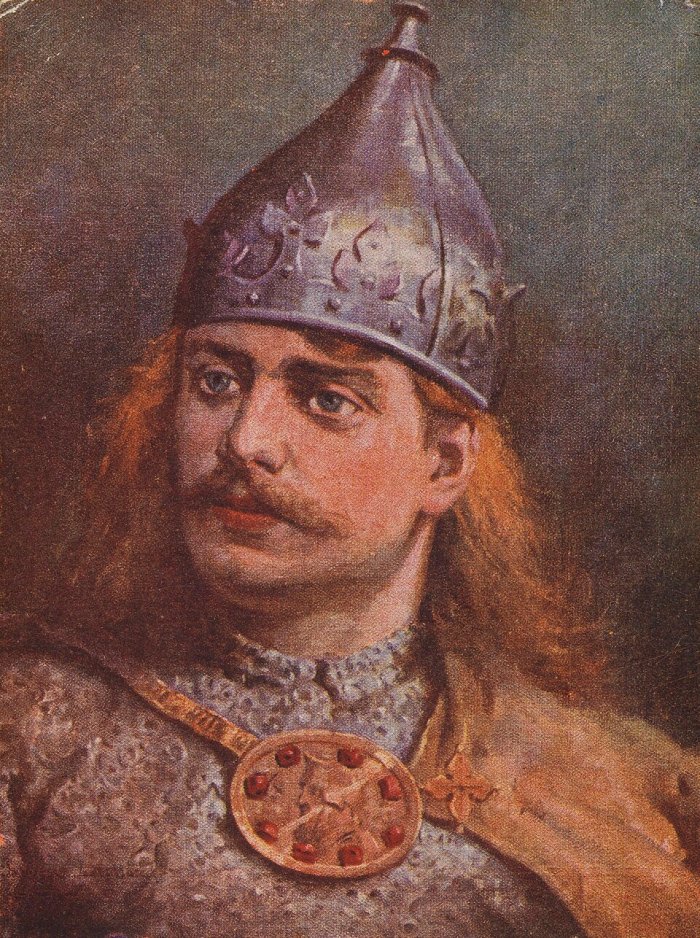Conny Waters – AncientPages.com – The House of Piast was the first historical ruling dynasty of Poland. For nearly ten years, scholars have actively debated the origin of the Piasts, who were Poland’s first recorded royal dynasty.
Statue of Mieszko I of Poland in the Poznań Cathedral’s Golden Chapel. Image credit: Roland von Bagratuni – CC BY-SA 2.5
This influential dynasty ruled from the 10th to the 14th centuries. The question of their beginnings has been a significant subject for extensive historical research and discussion, highlighting its importance in understanding Poland’s early history.
Prof. Marek Figlerowicz noted that the topic of the origin of the Piasts has long interested not only scientists but the entire Polish society.
Now, the research team led by the chairman of the Scientific Council of the Institute of Bioorganic Chemistry, prof. Marek Figlerowicz, informed that the work on the origin of the first Polish royal dynasty, is completed.
Over the past decade, researchers have been eager to shed light on the Piasts historical identity and significance. The central question has been whether they were local Slavic nobles, warriors hailing from Scandinavia, or perhaps exiles from Moravia.
According to the study, Piasts could be related to the ancestors of the Scots.

Bolesław Krzywousty – Bolesław III Wrymouth. National Library of Poland. Author: Jan Matejko (1838–1893) (Polona Digital Library.)
Professor Marek Figlerowicz and his team analyzed bone remains from 33 individuals, comprising 30 men and 3 women. They determined with high probability that these remains belonged to members of the Piast dynasty.
Their research revealed that the Y chromosome, which is inherited from father to son, indicated that these individuals belonged to a haplogroup predominantly found in the UK today and is very rare in the rest of Europe. A haplogroup refers to a group of people who share similar DNA sequences inherited from a common ancestor.
Among the samples predating the Piast state, the one with the closest genetic relation was discovered in a man who lived during the 5th to 6th centuries in what is now known as Scotland. This individual was a representative of the Pictish population.
These results clearly indicate that the Piast dynasty did not originate locally. Perhaps, it might appear somewhat implausible. However, it is difficult to determine when their ancestors arrived in what is now modern-day Poland.

Casimir II the Just -National Library of Poland . Author – Jan Matejko (1838–1893) – Public Domain
It often happened that members of ruling dynasties spread by marriages. For example, Swietoslawa (the alleged sister of the first Piast king, Boleslaw I Chrobry (Boleslaw the Brave), married the kings of both Denmark and Sweden, and was the mother of the Kings of Sweden, England, Denmark and Norway, her descendants ruled England for a period of time.
By the way, “Swietoslawa” is a character who appears nameless (or under other names) in Norse sagas and historical records and chronicles by Thietmar of Merseburg, and Adam of Bremen). However, it is not entirely certain whether she really lived, or whether this figure is a combination of several other women living in that period.
The Piast famous dynasty had many contacts and royal intermarriages was the practice of members of ruling dynasties marrying into other reigning families. Their “early Relations of the Piast state, not only with the northern countries of Europe, but also with England, were very important,” according to prof. Figlerowicz.
As we said, the origin of the Piasts interested not only scientists but the entire Polish society. Some believed they had links to Moravia, still others claimed that the ancestors of the Piasts could have been Vikings.
“We have no historical or archaeological data. The only way we could get to the bottom of this case was to test the DNA and find out who the Piasts were related to,” he said.
The researchers searched the whole of Poland, identifying remains that could most likely be attributed to Piasts. It was not easy; In many places they found empty coffins, in others, mixed bones. The analysis of samples taken from the largest Piast necropolis located in the Plock Cathedral proved to be groundbreaking.
Finally, the team has managed to identify at least ten representatives of the Piast dynasty, about whom we can say with a very high probability that they are definitely the wanted Piasts. Analysis of their genomes showed that almost all of them belong to the same line of haplogroup Y – that is, they are indeed people who are related in the paternal line. Then we tried to determine who they could have been related to,” he said.
Research, was recently accepted for publication in the prestigious journal “Nature Communications”.
Source
Written by Conny Waters – AncientPages.com Staff Writer









